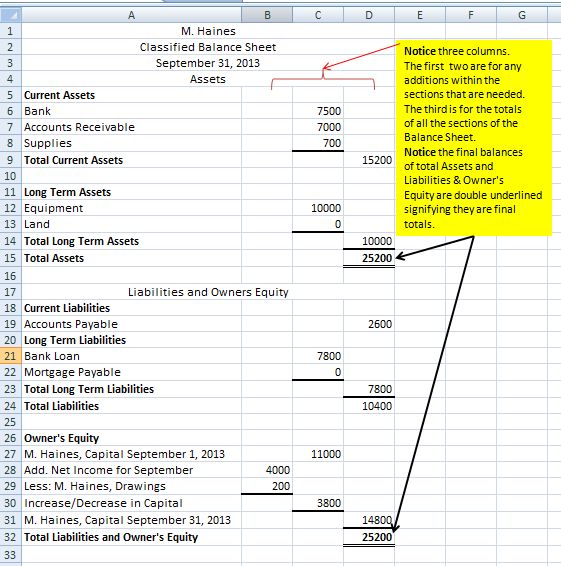
Publishing a classified balance sheet likewise makes it simple for regulators to bring up an issue in the initial stages itself rather than in the last stages when irreversible harm has been finished. It passes on a solid message to the investors that their money is protected as the board is not kidding about the business profits as well as running it morally and within the standards of the market. The characterizations utilized will change according to the kind of business you own, and there is no single method for designing a format of a classified balance sheet appropriately. You can change the account titles and the amounts listed in the spreadsheet to fit your needs.
Classified Balance Sheet Vs. Common Balance Sheet
Creating and keeping your balance sheet up to date will allow you to have a better handle on your company’s finances. Using the included template along with other financial reporting can help you manage debt, help you determine risks and returns, and it can be used to help you secure loans and other capital. To create a balance sheet manually, use two columns for entries of the items discussed earlier. The left column is for listing your assets, with a total of assets at the end of the column.
Long Term Liabilities
Not only will you need to know this figure, but potential buyers will want to know—and have the proof to back it up. However, decreasing order of liquidity will be used in GAAP US, and increasing order of liquidity is used in IFRS format. The above are some basic differences between the two categories of balance sheet.
Classified Balance Sheet Format
This part of our article will show you how to put things in the right boxes on a balance sheet. While in the case of an unclassified balance sheet, no such bifurcation of parts is made. Those three inquiries are the principal parts of a Classified balance sheet. What a business owns is called assets, what it owes is displayed as liabilities, and how much the business is worth equivalents equity.

- A similar rule holds for the Liabilities section, where you’ll list every single current liability, just as those that are long term, like other loans and mortgages.
- The rules, regulations and requirements of financial reporting also have a lot of influence on these statements.
- Balance sheets can help you identify trends and are commonly used when dealing with potential lenders, such as banks, investors, and suppliers.
- Hence, on the classified balance sheet, dividends would be reflected as a reduction in the stockholder’s equity section, specifically in retained earnings account.
Get $30 off a tax consultation with a licensed CPA or EA, and we’ll be sure to provide you with a robust, bespoke answer to whatever tax problems you may have. You can connect with a licensed CPA or EA who can file your business tax returns. At Taxfyle, we connect small businesses with licensed, experienced CPAs or EAs in the US.
Variations in Classified Balance Sheets in Different Countries – The Global Perspective
To make it easy to understand, we sort these assets into two main groups. There are no set criteria on how many sub-categories can be created and it will ultimately depend on what level of detail is required by the management. The two most common categories that are used in a classified balance sheet are current and long-term. The equity section represents the owners’ interest in the business and typically includes common stock, retained earnings, and treasury stock.
Balance sheets are one of the primary financial statements used to measure a company’s financial position. It summarizes the company’s assets, liabilities, and owners’ equity at a specific date, and it is used to calculate the net worth of the business. Current liabilities like current assets are assumed to have a life of the current fiscal year or the current operating cycle. They are mainly short debt expected to be paid back using current assets or by forming a new current liability. The critical point is they have to be settled fast and are not kept for later payments.
Understanding these variations is critical for accurate financial analysis and decision-making for multinational companies or global investors. Most of the leverage ratios, liquidity ratios, and return on investments are calculated by the balance sheet data. In that classified balance sheet template case, the time is saved in ratio analysis due to accurate and precise classifications. However, it is mandatory to prepare and disclose the financial statements for public limited companies. A classified balance sheet presents an obvious picture of financial health.
The equity segment of the classified balance sheet is exceptionally simple and like a non-classified report. If your equity is negative, there are more liabilities than assets, and the company could be in trouble. This article was written by Adil Abbasi, a Chartered Management Accountant (CMA).
By organizing everything into these sections, a classified balance sheet gives a clear picture of the company’s financial health. It helps people make informed decisions about investing in or lending money to the company. Plus, it makes understanding the company’s finances a lot easier for everyone. By looking at a classified balance sheet, investors and creditors can see how well the company is doing.



Leave a Comment